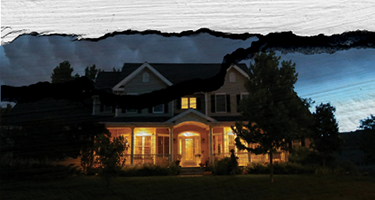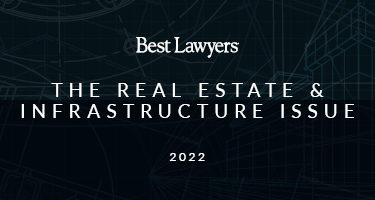As a real estate litigator, these have been exciting times for practitioners and trying times for developers. We compare these times to the Dutch touching New York soil for the first time. In the heart of Brooklyn, Queens and the Bronx, we have run into paper streets, easements for train tracks never built, plans for communities that went in a different direction, and desired uses for land never contemplated or approved until recently. As a result of the desired development, encroachments and recorded obstacles have had to be reckoned with. In addition, as a further result of this “wild-west”-type land rush into areas not previously subject to massive development, the number of prescriptive easement cases have bloomed.
This article will discuss how New York appellate courts determine whether or not a party is entitled to claim a prescriptive easement over another party’s land. It will also discuss a number of recent cases and claims and when such encroachments are viable.
Unlike the law of adverse possession, under which an individual in possession of land owned by another may over time become fully vested with title to the land, see Walling v. Prysbylo, 7 NY3d 228 (2005); Franza v. Olin, 73 AD3d 44, 897 NYS2d 804 (4th Dept. 2010), a prescriptive easement acquired over time provides only a limited interest in the land. As explained by the Court of Appeals in Di Leo v. Pecksto Holding, “the enjoyment of easements lies in use rather than in possession, the only physical conduct necessary for their acquisition by prescription is ‘making use’ of a portion of another’s land.” 304 NY505, 511(1952) (Fuld, J.) (Internal citations omitted). Nevertheless, once acquired, that limited interest may not be involuntarily abridged or divested.
Common Law
One American court has placed the origin for “gaining a right by prescription,” in English law, at a “point anterior to the memory of man,” but which “at one time, was fixed at [the year 1189] the commencement of the reign of Richard I [the Lionheart],” and it eventually “became a settled principle of the common law, that such an enjoyment for the term of twenty years raises a legal presumption that the right was originally acquired by title.” Lanier v. Booth, 50 Miss. 410, 414 (1874).
The right of use acquired with a prescriptive easement is typically a right of passage over the land from and to another property or to a public thoroughfare, but it also extends to the right to use certain features of the land in common with the landowner and/or third parties; for example, hunting on the property or fishing or swimming in a lake or stream abutting the property. See Bova v. Vinciguerra, 184 AD2d 934, 585 NYS2d 125 (3d Dept. 1992).
However, while the law of adverse possession is governed by statutory provisions derived (except for certain 2008 amendments to Article 5, Real Property and Proceedings Law [RPAPL], §§501, et seq.) from long-standing common law principles, the law of prescriptive easements remains rooted in the common law. The 2008 amendments to RPAPL Article 5 make no mention of easements. Nevertheless, the courts hold that the doctrines of prescriptive easement and adverse possession are analogous, see Klin v. New York Rapid Transit Corporation, 271 NY 376 [1936]), and, therefore, the statutory rule prescribing the passage of a 10-year period, before the vesting of an adverse possession ripens, is also used to determine when the right to an easement by prescription ripens. See, e.g., Posnick v. Herd, 241 AD2d 783, 660 NYS2d 756 (3d Dept. 1997).
How the Easement is Acquired
While similar to the elements of proof required to acquire title to land by adverse possession, the requisite elements of a prescriptive easement are not identical to those required for adverse possession.
The common law standard for acquiring a prescriptive easement, as most recently reaffirmed in Carty v. Goodwin, 150 AD3d 812, 55 NYS3d 108, 109 (2d Dept. 2017), and as universally applied in all four Appellate Division Departments, is as follows: “An easement by prescription is generally demonstrated by proof of the adverse, open and notorious, continuous, and uninterrupted use of the subject property for the prescriptive period.”
By contrast, RPAPL §501 provides that an “adverse possessor gains title to the occupied real property upon expiration of the statute of limitations for an action to recover real property pursuant to [CPLR §212], provided that the occupancy…has been adverse, under claim of right, open and notorious, continuous, exclusive, and actual.” (Emphasis added).
Therefore, although the period within which a prescriptive easement ripens is the same 10-year period required to vest title by adverse possession, the claimant to a prescriptive easement is not required to prove that his or her use of the land was exclusive. See, e.g., Posnick v. Herd, supra.
Thus, in Bova v. Vinciguerra, supra, the plaintiffs had walked across a path over defendant’s land for over 25 years to dock a boat, fish, and swim in the summer and to go ice fishing and skating in the winter. Relatives, friends, and guests had also done so. However, after the defendant erected a fence that prevented plaintiffs from gaining access to the lake, and after plaintiffs sued to enjoin defendant from interfering with their right to use the path, the court found the record indicated that plaintiffs were the “principal users of the path,” and that they had demonstrated, by clear and convincing evidence, that their use of the path had been sufficiently open, notorious, and continuous to raise the presumption that their use had been adverse and not done with defendant’s permission or license. Upon finding that the defendant had failed to present sufficient evidence to rebut the presumption, the court held that the plaintiffs had established their prescriptive easement claim.
There is a difference, however, between being the “principal user” of a path over and through another’s property, along with the owner and third parties to access a dock on a lake, and claiming a prescriptive easement over a thoroughfare used in common with the general public. “Use of a particular strip of land in common with the general public will not ripen into an easement by prescription.” Susquehanna Realty Corp. v. Barth, 108 AD2d 909, 485 NYS2d 795, 797 (2d Dept. 1985).
Thus, In Peck v. State, 15 AD2d 443, 446, 224 NYS2d 758761 (4th Dept. 1962), the court found that plaintiffs could not claim a prescriptive easement over a public thoroughfare which at one time had been used by the general public to enter a strip of land that was an access route to the Erie Canal. The court noted that there can be no finding of the kind of individual hostile use necessary to establish an “independent foundation” for an easement personal to the claimant and apart from (or “exclusive” of) any other member of the public. In such cases, [i]f the claimant is only one of two, or several, or many who make the use[s] in question, it is perhaps inferable that all of these uses are permissive,” and “the claimant must affirmatively prove the adverse character of his behavior.”
The Shifting Burden of Proof
“Generally, proof that use of a property was open, notorious, continuous and undisputed will give rise to a presumption that the use was hostile and under a claim of right.” Cole v. Rothe, 18 AD3d 1058, 1059, 795 NYS2d 373 375 (3d Dept. 2005). Upon such proof, “[t]he burden is then shifted to the party denying the existence of an easement to establish that the use of the subject land was, indeed, permissive.”
The courts have held that shifting the burden of proof to the owner, to show permissive versus hostile use, is reasonable because “the granting of permission is an affirmative act and the burden can properly be placed on the party asserting the affirmative.” In addition, “an owner who permits such long-standing uses while evidence dissipates can, in fairness, be saddled with this burden. Subsequent owners should be no better off because they take with notice of an open and continuous use.” New York State Electric and Gas v. Persson, 64 Ad2d 194, 409 NYS2d 440 (3d Dept. 1978).
However, where the claimant cannot establish that use of the property, by himself and/or by his predecessors in interest, was continuous and uninterrupted, there is no presumption of hostility requiring any rebuttal by the property owner. ( See, Carty v. Goodwin, supra; see also Mangar v. Jairam, 11 Misc.3d 1080(A), 819 NYS2d 849 [Sup.Ct., Queens Co., 2006]). But, when the claimant does offer clear and convincing proof of use, “bald testimony” by the property owner that the claimant’s use was permissive will not rebut the presumption of hostility. (See McLean v. Ryan, 157 AD2d 928, 930, 550 NYS2d 184 [3d Dept. 1990]).
Where the property owner can rebut the presumption and establish as a matter of law “that [claimant’s] use of the purported easement was permitted as a matter of willing accord and neighborly accommodation,” the burden shifts back to the claimant “to come forward with evidence of hostile use sufficient to raise a triable issue of fact.”315 Main Street Poughkeepsie v. WA 319 Main LLC, 62 AD3d 690, 691, 878 NYS2d 193, 194 (2d Dept. 2009). (See also Duckworth v. Ning Fun Chiu, 33 AD3d 583, 822 NYS2d 147 [2d Dept. 2006]).
Nevertheless, in Haudek Real Estate v. Bayport Postal Realty, Index No. 13-4465 (Supreme Court, Suffolk Co., 2016), 2016 NY Misc. Lexis 3755, where the claimant’s evidence was insufficient to raise a presumption that its use of the owner’s property had been adverse and hostile, and the owner’s evidence was also insufficient to establish that plaintiff’s use had been permissive, the court denied the owner-defendant’s motion for summary judgment, because the owner’s argument, that plaintiff could not rely on a presumption of adversity, was deemed “insufficient to establish a prima facie case that plaintiff did not acquire a prescriptive easement.” (Emphasis added).
Finally, where it cannot be established that the claimant’s use of the property was either with or without permission, but “where the record suggests a long period of peaceful coexistence between residential neighbors…, the question of implied permission is one for the factfinder to resolve.”Mee Wah Chan v. Y & Development Corp., 82 AD3d 942, 944, 919 NYS2d 74, 76 (2d Dept. 2011) (internal quotes omitted).
An Unusual Easement Case
In Anzalone v. Costantino, 145 AD3d 1236, 43 NYS3d 204 (3d Dept. 2016), the defendants attempted to enforce an express written easement over plaintiff’s adjacent property that entitled them to use a driveway to access garages at the rear of the their property. Alternatively, the defendants argued that they also had a prescriptive easement to use of the driveway. They lost on both counts. The court rejected both their claim that the plaintiff had violated the written easement and their contention that their use of the driveway entitled them to claim a prescriptive easement.
The relevant conveyance, recorded in 1988, contained a metes and bounds description that placed the written easement on another parcel–one not owned by the grantor of the easement! The plaintiff acquired the adjacent property in 2001, and in 2005, the defendants, without any involvement of the plaintiff, attempted to correct the description in the 1988 conveyance, but were apparently unsuccessful in doing so.
In 2012, the plaintiff made a series of changes to the driveway which involved the construction of a retaining wall that defendants claimed made it more difficult for them to use the driveway. Plaintiff then sued seeking either a judgment to declare the defendants’ right of way invalid or a judgment that his driveway changes did not impermissibly interfere with defendants’ rights. The Third Department affirmed the decision in Supreme Court to interpret the conveyance “to effectuate the intent of the agreement” in order to avoid the “absurd result of a right-of-way being granted over property that the grantor did not own.”
The Third Department agreed with Supreme Court that “inasmuch as the [conveyance] lacks a specific metes and bounds description or other expression to the contrary, plaintiff is free to unilaterally relocate it so long as the change does not frustrate the parties’ intent or object in creating the right of way, does not increase the burden on the easement holder, and does not significantly lessen the utility of the right of way.” (Internal quotation marks omitted). The Supreme Court had also credited plaintiffs’ evidence that defendants’ right of access was not impaired, and the Third Department perceived “no reason to disturb the determination that plaintiff was free to alter the driveway as he did.”
In addressing defendants’ argument that, in addition to the rights they asserted under the 1988 conveyance, they were also entitled to a prescriptive easement over plaintiff’s property, the Third Department held that the written easement precluded any presumption of the hostile or adverse use necessary to acquire a prescriptive easement. The Court explained that “defendants’ use pursuant to an express easement granting an undefined right-of-way…is neither hostile nor adverse…[and] does not in and of itself fix an otherwise undefined location so as to enlarge the interest of the easement holder or reduce the interest of the landowner.” (Internal quotation marks omitted).
Landlord and Tenant Rights
It is also well established that a tenant may obtain adverse rights over the property of a third party and that those rights revert to the tenant’s landlord upon termination of the tenancy.
As explained in Bedlow v. New York Floating Dru-Dock Company, 67 Sikels 263, 112 NY 263, 283 (1889):
It is settled law that all that the tenant acquires from third persons appertains to the landlord. The rule is applied even to encroachments made by him upon the lands of others…. These cases establish the doctrine that a tenant, even from year to year, has the capacity to acquire a permanent interest in adjacent lands belonging to third parties for the use of the leased property, which shall inure to his own benefit while the tenancy continues, and on its expiration shall appertain to his landlord. There appears to be no difference in principle whether the acquisition is made by prescription or by contract.
See also Bradt v. Giovannone, 35 AD2d 322, 316 NYS2d 961 (3d Dept. 1970); King v. Townsend, 78 Hun. 380, 29 NYS 181 (First Dept. 1894).
Nevertheless, where a landowner grants a revocable license to use his property to a person who must travel over the land of an adjoining property owner, in order to gain access to the licensed property, the licensee can acquire no easement over the adjoining property. The license is not a lease, the licensor is not a landlord, and the licensee is not a tenant who can acquire a permanent interest in the adjoining property for the benefit of his licensor’s property. (See LeMay v. General Electric Company, 114 Misc.2d 445, 451 NYS2d 1990 [Special Term, Saratoga Co., 1982]).
Conclusion
Prescriptive easements are as varied as there are parcels of property and the owners and users of land that may become subject to the users’ claims. But whether the prescriptive easement claimed is a possessory use to a right of passage over the land, from and to another property or to a public thoroughfare, or the right to use certain features of the land in common with the landowner and/or third parties (for hunting on the property or fishing or swimming in a lake or stream abutting the property), the claim will not ripen or be upheld by the courts without evidence of clear and convincing use of the land that has been adverse to the interests of the landowner, open and notorious, continuous, and uninterrupted for the prescriptive period.
Adam Leitman Bailey is the founding partner of Adam Leitman Bailey, P.C., and John M. Desiderio is a partner and Chair of the firm’s Real Estate Litigation Group.
Adam Leitman Bailey, P.C.

























